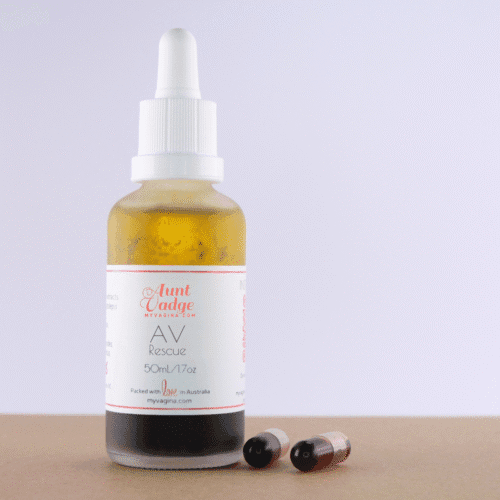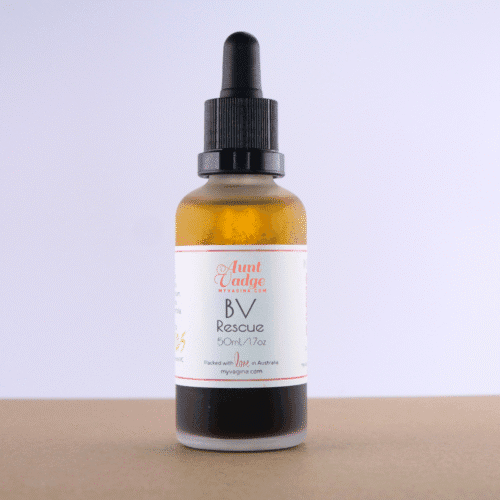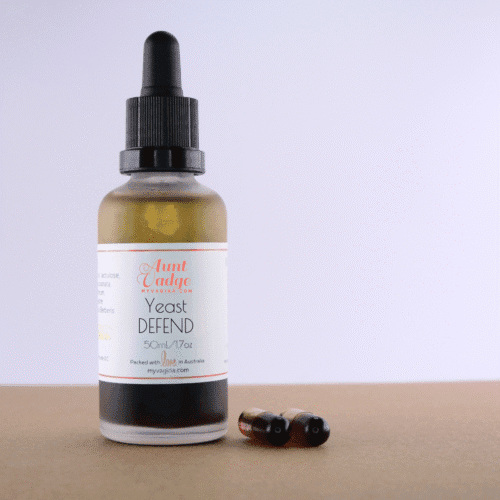For trans men undergoing gender-affirming testosterone therapy, the changes brought about by this hormone can be life-affirming and empowering.
Testosterone’s masculinising effects, such as deepening the voice, promoting facial hair growth, and altering fat distribution, often bring significant comfort and alignment with gender identity. However, testosterone also causes shifts in the body’s hormonal balance, leading to changes in the vulva and vagina.
One common but under-discussed effect is the development of vaginal dryness, irritation, and atrophy. These changes can lead to discomfort in daily life, during sexual activity, or both.
This guide explores why these changes happen, what they mean for your health, and how you can address and manage symptoms while continuing testosterone therapy.
Understanding and caring for your body—even when these changes feel complicated—is an essential part of maintaining both physical and emotional well-being.
Why vaginal dryness, irritation, and atrophy occur on T
Testosterone therapy at high doses dramatically reduces the production of estrogen in the body. While this reduction is key to achieving many of the masculinising effects of testosterone, it also impacts tissues that rely on estrogen to stay healthy and functional. The vagina and vulva are particularly affected by this hormonal shift.
Estrogen is responsible for maintaining the thickness, elasticity, and lubrication of the vaginal walls. When estrogen levels drop, these tissues become thinner and less elastic, a condition known as vaginal atrophy. This thinning makes the tissues more fragile and prone to irritation. Additionally, the glands responsible for natural lubrication produce less fluid, leading to increased dryness.
Another consequence of lower estrogen levels is a shift in the vaginal pH balance. Under normal circumstances, estrogen helps maintain a slightly acidic environment in the vagina due to the support of a healthy lactobacillus colony. These protective bacteria help prevent infections.
When estrogen levels decline, there is a loss of these natural lactic acid-producing bacteria, and the pH becomes less acidic, disrupting the natural microbiome. This change can make trans men susceptible to bacterial vaginosis (BV), aerobic vaginitis (AV), or yeast infections.
These physiological changes are entirely normal for trans men on testosterone, but they can cause discomfort, particularly during activities like sex, exercise, or even sitting for extended periods. Recognising and addressing these symptoms early is crucial for maintaining a positive relationship with your body.
Symptoms of vaginal atrophy
The symptoms of vaginal atrophy and related issues can vary, but they often include vaginal dryness, itching, burning, or general discomfort. Some individuals experience pain during penetrative sex or while using tampons.
Others may notice minor spotting or bleeding due to the fragility of the vaginal tissues. An increase in urinary tract infections (UTIs) is also common because the loss of healthy bacteria reduces the body’s natural defences.
It’s important to note that these symptoms don’t mean you’re doing anything wrong or that testosterone therapy isn’t working as intended. They are a natural result of the hormonal changes caused by T and can be effectively managed with the right care.
Managing vaginal dryness and discomfort
One of the most effective ways to manage vaginal dryness is by using My Vagina’s Fennelope, an all-natural preparation that rebuilds the vaginal epithelium. Fennelope has a local phytoestrogenic effect, supporting protective lactobacilli levels.
Fennelope does not increase systemic estrogen levels, only vaginal, providing long-lasting effects even once use has paused. These pessaries are safe to use as needed. but it’s best to use every night for two weeks to rebuild the environment, then stop and use only as needed.

Effective in low oestrogen states - postmenopause, late perimenopause, breastfeeding, trans men with Vs, with use of oestrogen-blocking drugs, and in ovarian insufficiency.
Vaginal moisturisers
Other popular preparations include over-the-counter vaginal moisturisers. These products are designed to hydrate and soothe the vaginal tissues, providing long-lasting relief from dryness. But, moisturisers do not contain estrogenic compounds and only work so long as you use them.
Unlike lubricants, which are used during sexual activity, vaginal moisturisers work to improve the overall hydration and health of the tissues. Regular application, as recommended by the product instructions, can significantly reduce discomfort.
Lubricant
For those experiencing dryness or irritation during sexual activity, lubricants can be a game-changer. A high-quality water-based or silicone-based lubricant can reduce friction and make penetration or external stimulation much more comfortable.
Silicone-based lubricants are particularly effective for longer-lasting activities, as they don’t dry out as quickly as water-based ones. It’s important to avoid oil-based lubricants if you’re using latex condoms, as the oil can weaken the material and increase the risk of breakage.
Estrogen cream or suppositories
If vaginal dryness and atrophy are severe, or if symptoms persist despite using moisturisers and lubricants, consulting a healthcare provider is essential. In some cases, your doctor may recommend low-dose vaginal estrogen treatments, such as creams or suppositories.
These treatments deliver estrogen directly to the vaginal tissues, helping to restore their thickness, elasticity, and lubrication. Importantly, these treatments act locally and do not significantly affect the overall masculinising effects of testosterone therapy.
Preventing and managing infections
Changes to the vaginal microbiome caused by testosterone can increase the likelihood of infections like bacterial vaginosis or yeast infections.
BV often presents with symptoms such as unusual discharge and a strong fishy odour, AV tends to present with inflammation, yellow-green discharge and a foul odour, while yeast infections are characterised by thick white discharge and intense itching.
Maintaining good hygiene practices can help reduce the risk of these infections. Avoid any oil-stripping soaps or perfumed products, douches, or scented or printed toilet paper.
Remember that BV can be transmitted via sex, but is not (yet) considered an official sexually transmitted infection. Practice good sexual hygiene.
If you suspect an infection, seek treatment promptly. BV and AV are treated with My Vagina’s range of effective, natural pessaries, or antibiotics, while yeast infections can be managed with My Vagina’s Yeast/Thrush Vaginal Pessary or antifungal medications. Treatments are effective and widely available.

Targeted support for aerobic vaginitis-related bacteria, promoting restoration of a healthy microbiome.

Support recovery from vaginal yeast infections and thrush, while supporting a healthy vaginal microbiome.
Addressing dysphoria while managing symptoms
For many trans men, dealing with vaginal dryness, irritation, or atrophy can be emotionally challenging, especially if these changes bring up feelings of dysphoria. It’s important to acknowledge these emotions and approach your body with compassion.
One way to navigate dysphoria is to reframe your perspective on these symptoms. Instead of viewing them as a problem, try to see them as a sign that your testosterone therapy is working as intended. Your body is responding to T in a way that aligns with your transition goals, and these side effects are part of that process.
Using affirming language for your anatomy can also help. Some trans men prefer neutral terms like “front hole” or “genital area” instead of more traditional terms like “vagina.” The goal is to find language that feels comfortable and empowering for you.
If these feelings become overwhelming, connecting with a therapist or counsellor experienced in working with trans clients can provide valuable support. Additionally, reaching out to trans communities or support groups can help you find others who have faced similar experiences and can offer advice and solidarity.
Talking to your healthcare provider
Navigating vaginal atrophy on testosterone can feel intimidating, especially if discussing these topics with a healthcare provider makes you uncomfortable.
Finding a provider who is knowledgeable about trans health and affirming of your identity is crucial. They can help you explore treatment options, answer questions, and provide reassurance that your symptoms are manageable.
When speaking with your provider, don’t hesitate to bring a list of symptoms or concerns to guide the conversation. If possible, seek out clinics or organisations specialising in transgender healthcare to ensure you receive compassionate and affirming care.
My Vagina is a trans-friendly vulvovaginal specialist clinic, and we can help you with vaginal atrophy.
Vaginal dryness means your testosterone is working!
Vaginal dryness, irritation, and atrophy are common effects of testosterone therapy, but they don’t have to be a source of ongoing discomfort or distress. By understanding why these changes occur and taking proactive steps to manage them, you can maintain both your physical and emotional well-being.
References1,2
- 1.T’Sjoen G, Arcelus J, Gooren L, Klink DT, Tangpricha V. Endocrinology of Transgender Medicine. Endocrine Reviews. Published online October 10, 2018:97-117. doi:10.1210/er.2018-00011
- 2.Dimakopoulou A, Seal LJ. Testosterone and other treatments for transgender males and non-binary trans masculine individuals. Best Practice & Research Clinical Endocrinology & Metabolism. Published online September 2024:101908. doi:10.1016/j.beem.2024.101908

Get a fresh perspective with a qualified, experienced vulvovaginal specialist naturopath.
This product has multiple variants. The options may be chosen on the product page
The most comprehensive vaginal microbiome test you can take at home, brought to you by world-leading vaginal microbiome scientists at Juno Bio.

Promote and support a protective vaginal microbiome with tailored probiotic species.











